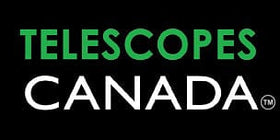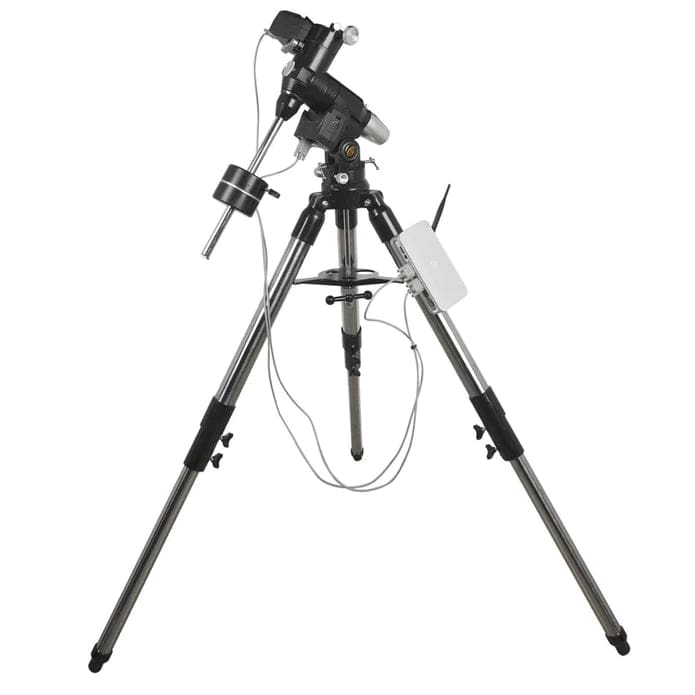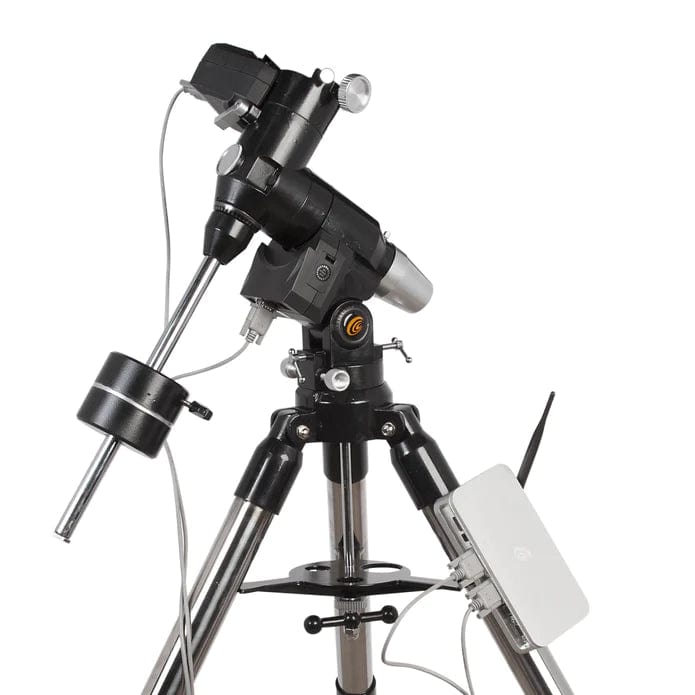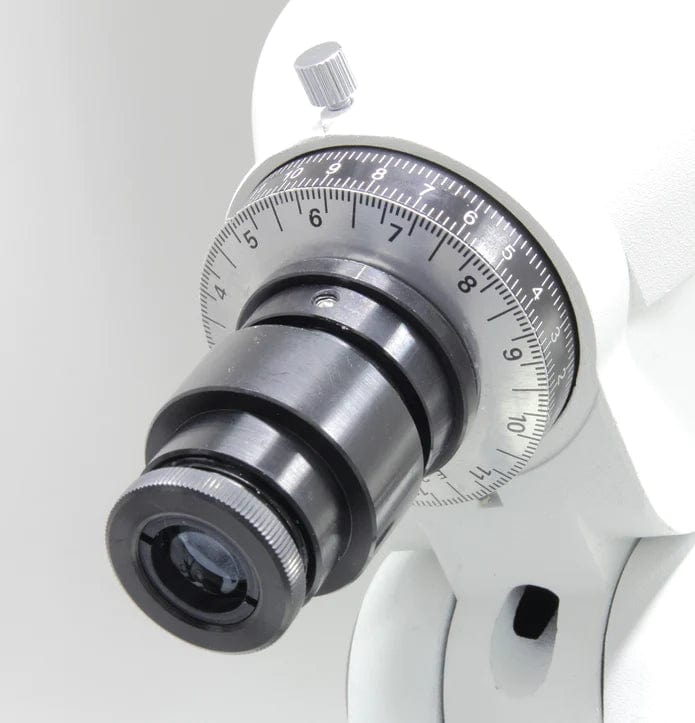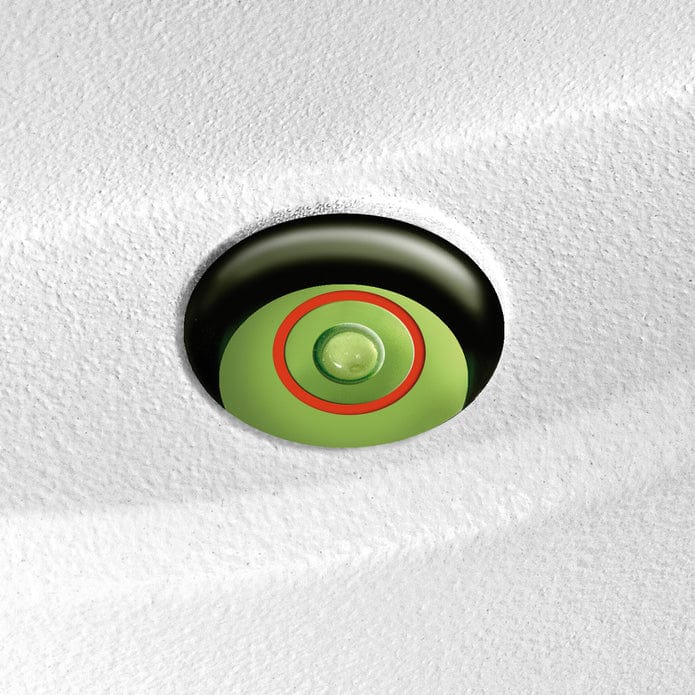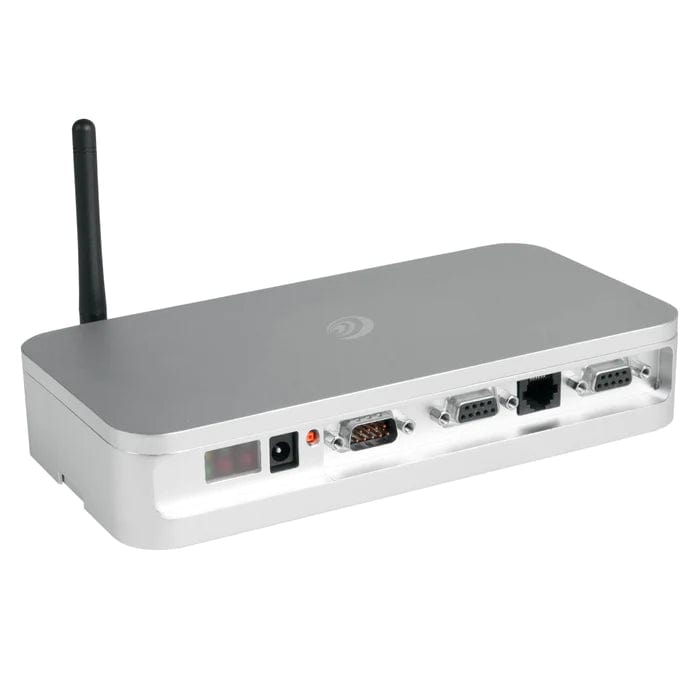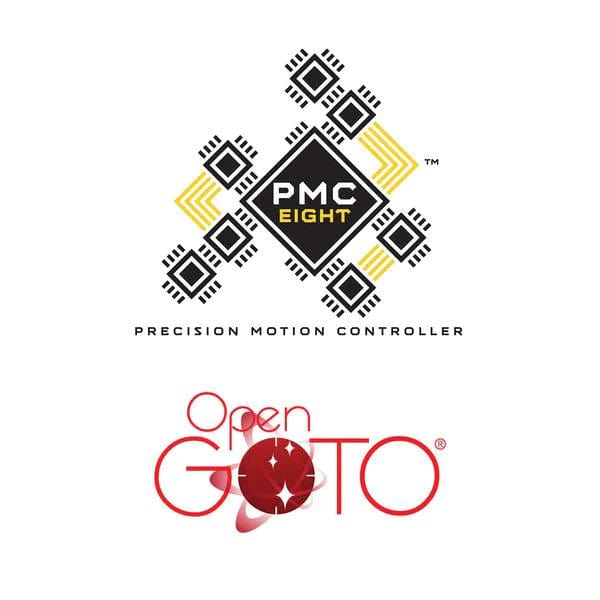Description
The award winning Explore Scientific EXOS2-GT PMC-Eight Equatorial Mount with its 28 lb instrument payload capacity for astrophotography is an excellent choice for many of Explore Scientific's telescopes as well for the visual astronomer where the instrument payload capacity can be pushed much and more, providing a very solid portable solution for those who want to use a larger telescope that would normally require a much larger equatorial platform.
"This just makes me even happier with my purchase of a EXOS2-GT, I've come nowhere near capacity with mine. But this is just a very reassuring example of the quality of Explore Scientific products, and another reason why I will continue to be a customer!"
-James Hubbard
We often get calls about the “load capacity” of our mounts. For telescope tracking mounts there are generally two different specs: instrument payload capacity for astrophotography, and instrument payload capacity for visual use.
Payload capacity ratings for visual are normally much higher than for astrophotography because with added weight beyond a certain point, there is an increase in tracking error (e.g. periodic error, etc.). For the EXOS2 GT PMC-Eight the instrument payloadd capacity for astrophotography is 28lbs + counterweights. And for visual use, the instrument payload capacity is 40 lbs + counterweights.
Note that we chose stepper motors for the PMC-Eight instead of DC servo motors because they can handle incredible strain and not damage mechanical nor electronic components.
Explore Scientific's PMC-Eight GoTo system can be controlled wirelessly or wired with a tablet or PC, with Windows 8.1 or 10, Android, Amazon Fire, or iOS, with a free app called ExploreStars. Tablet must be purchased separately.
The ExploreStars App controls any PMC-Eight mount by means of an intuitive graphical interface. Among other features ExploreStars offers both 2-star and 3-star alignment procedures, educational information and images of the more popular celestial objects, and a choice of over 80,000 objects for viewing.
The ExploreStars object database encompasses a wide range of celestial objects including those in the Solar System, the Messier Catalog, the New General Catalog, and the Index Catalog, as well as a collection of over 70,000 stars. The Celestial Database also includes educational material and images for many of the more popular objects. This database is available as a separate updatable component of the ExploreStars software system. It can expand over time and any ExploreStars implementation can easily be updated by downloading a fresh copy of the Celestial Database. In fact, the educational material and images within the database can be customized by each individual user using Microsoft Access.
In addition to ExploreStars, we provide an ASCOM interface that will allow a huge range of star map software to control the PMC-Eight. Here are just are some examples that are currently available: ACP; APT; AST / ATC & Ricerca (Omega Lab); AstroArt; AstroMB; Cartes du Ciel / Sky Chart; CCD AutoPilot; DeepSky; Deepsky Planner; DFM Engineering; Earth Centered Universe Pro; EasySky; Eye and Telescope; Project Pluto; Hallo Northern Sky; Maxim DL; MaxPoint; PinPoint Astrometric; Prism; Sequence Generator Pro; Sidereal Technology; The Sky; SkyMap Software; SkyTools 3; Star Atlas PRO; Sky Observer; StarryNight; Stellarium; and Virtual Moon Atlas.
